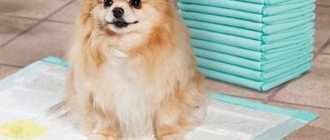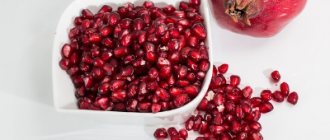Turtle
Turtles are easy to care for, even for children. To maintain it, you will need a spacious terrarium in which the temperature and humidity level will be constantly monitored. It is enough to clean the terrarium once a month and change the water in the drinking bowl every week.
Subtleties:
— Land turtles molt periodically - their skin on their paws and head changes. At this time, you need to bathe the turtle in warm water with the addition of 1 tablespoon of soda, and after bathing, lubricate the skin with vegetable oil.
- If the food and bedding are too soft, the turtle's beak and claws will grow too long. The overgrown edges of the beak and claws should be carefully bitten off with nippers, and the uneven edges should be trimmed with a file.
— You shouldn’t let the turtle “travel” around the apartment on its own. You can step on it, it can catch a cold from a random draft, and besides this, land turtles tend to dig everything that comes under their paw (carpets, slippers, etc.), and their claws are strong.
What to feed? Stiff grass, cabbage, carrots, beets - turtles do not need any exotic delicacies.
Turtle
There are land ones, and there are aquatic ones - for the aquarium. In both cases, the turtle is easy to care for - no special time or investment is required. This leisurely amphibian will not cause any trouble or worry.
Joy:
- the turtle lives a long time, if no emergency happens, the animal will live with you for about 30 years - the baby will have time to grow up and have his own babies;
- one of the slowest animals - you won’t have to chase it around the apartment, playing tag;
- turtles do not have fur that will remain on the furniture, they do not make sounds - therefore they will not bother you in any way;
- The aquatic turtle is a rather meditative creature. It’s so nice to watch how she leisurely splashes in the water, crawls out onto an island of land and exposes her muzzle to the warmth;
- the required minimum (which is also the maximum) is an aquarium for an aquatic turtle and a plexiglass box for a land turtle;
- Pet food is also simple - greens, vegetables and grass.
Nasty:
- not every child will be interested in this unshakably calm and slow creature; there is a chance that the baby’s turtle will disappoint;
- You won’t be able to squeeze and hug a turtle; after all, the shell is not a fluffy body.
Budgie
A well-equipped cage is the main thing a parrot needs. A drinking bowl, a feeder and a bathtub are mandatory interior items. The cage should be rectangular, spacious, it would be good if there were not only perches, but also a swing or a ladder. You can add sand to the bottom of the cage. It is better to place the cage in a bright place (but not in the sun) and not in a draft - the brighter the room, the better the parrot will feel.
Subtleties:
- Parrots molt too. The first molt begins at 4-6 months and continues throughout life. Parrots pluck out dead feathers themselves, and this is almost imperceptible, but if you notice bald patches, you should be wary. It is likely that the reason is stress, vitamin deficiency, exhaustion or a cold.
— To prevent the parrot from growing the tip of its beak (this prevents it from eating), invite the bird to peck on fresh branches (preferably linden or rowan) or special mineral stones.
— If you want your parrot to talk, take only one parrot, regardless of gender, and do not place a mirror or toys that look like a bird in the cage.
What to feed? Specialized food and supplements for your parrot can be purchased at any pet store. But you need to pay special attention to water. Tap and boiled water will not work, as the chlorine it contains is extremely harmful to birds. It is better to buy drinking still water. During the molting period, it is useful to add 2-3 drops of freshly squeezed lemon juice to the water.
Decorative birds
The birds are very sociable. Some species, such as parrots, are also capable of perfectly imitating the human voice. You can communicate with them verbally, teach them to speak, sing. “Birds are ideal friends for children with speech delays,” says Olga Turovtseva. “Besides, singing and chirping are wonderful relievers of tension and stress.” When choosing a feathered pet for your baby, take a closer look at budgies or other small birds, such as canaries. They are perky and lively. We do not recommend buying large parrots such as cockatoos for a house where there are children. These exotic birds have a difficult character, and it can be difficult even for an adult to get along with them.
It should be taken into account.
It can be difficult for a bird (especially a large one) to move around an apartment (especially a small one); there are many dangerous places for it. While in “free flight”, birds often fly out through windows and vents, hit furniture and walls and, of course, leave marks everywhere. So, most likely, your winged friend will spend most of his time in a cage. Moreover, in some cases (for example, if the bird is aggressive) - in a place inaccessible to the child. He will be able to watch her, talk to her, but not touch her. By the way, also because a baby can, without meaning to, harm a small bird, for example, by slapping it with his palm. But with proper care and feeding, most birds, especially large ones, live quite a long time.
Listen to our recommendations so that your pet becomes a true friend for your child, and for you - a source of joy and good mood!
Hamster
Hamsters need a very durable wire cage, as they can chew through any other material. Instead of a cage, you can buy a terrarium. Sprinkle sawdust generously at the bottom - hamsters love to burrow and build holes for themselves. You need to clean the cage no more than once a week: hamsters really don’t like it when, after cleaning, their “native” smell does not remain in the cage. Place the cage away from drafts, heaters, direct sunlight and away from objects that the hamster might drag into its cage (curtains, houseplants, etc.). You should not bathe your hamster - he can easily catch a cold. For hygiene procedures, install a bathing tub with sand in the cage.
Subtleties:
— Unlike other rodents, hamsters are solitary animals and often do not get along together.
- Walking a hamster around the apartment is also not recommended - there is a very high probability that he will run away. It is better to equip a special paddock with toys for walks.
— The main problem that can arise with these animals is their night activity and the noise they create.
What to feed? Both commercial feed and raw vegetables can be fed. It is recommended to keep a mineral stone in the cage so that the hamster can wear down its teeth, because like all rodents, they grow continuously and it is highly undesirable to outgrow them.
Rat
All you need is a cage, bedding and toys. Rats should be kept in metal cages with fine wire mesh. If you do not have time to walk your pet, it is best to place the rat in a multi-story cage and place more toys, ropes, and ladders there so that the animal has something to do. Large sawdust or wood fillers can be used as bedding. It is recommended to clean the cage as it gets dirty and smells.
Subtleties:
— Rats can remember their names and can be trained.
— These are very active animals, and they definitely need walks around the apartment. Be careful: the animals taste everything they come across, and give special preference to wires.
— Another disadvantage is that rats mark their territory: females are almost odorless, and males have a slight but unpleasant odor.
What to feed? The easiest way is to use ready-made diets. And to grind down teeth, you need to give rats special briquettes, which are also sold in pet stores. Some animals prefer to gnaw on the branches of fruit trees; apple and plum trees are best suited.
Dogs
Golden retriever
An unusually intelligent, friendly and active golden retriever will become a true friend and companion for a restless child. These dogs are created for family life, they love communication and are afraid of loneliness. Their increased playfulness and cheerfulness literally makes it impossible to sit still. Retrievers love to chase a ball, fetch a stick, and swim. They are calm, balanced and quickly learn any commands.
Golden retriever
Pug
The small short-haired pug is an inquisitive, funny animal that is ideal for keeping both in the house and in the apartment. This breed is distinguished by its friendliness, ability to find a common language with any person, cleanliness and incredible mental abilities.
pug
Irish Setter
Fawn-red Irish beauties have long gained popularity among pet lovers. Energy, kindness, and need for attention are the main distinguishing features of the breed. Setters have hunting instincts, so the owner will be protected during a walk. At home, the Irish are incredibly affectionate and gentle with all family members. They love to be brushed. Teach this skill to your child.
Irish Setter
Dalmatian
This cute Dalmatian will make a wonderful, loyal friend for both boys and girls. Dalmatians have an easy-going, calm and patient character. They will never offend a child or show aggression towards him. It is quite simple to teach these dogs various commands - they happily fulfill the requests of their owner.
Dalmatian
Labrador
Labradors are easy to train. The main thing is to start doing this on time (at about three months of age). It is quite difficult for these dogs to sit still, so try to find them some kind of task as often as possible, for example, fetching slippers. Labradors love to swim. Don’t forget to take your pet with you on your summer holiday to the river, letting him swim in the river. This breed is patient with children. They will faithfully sit next to the child, guarding his sleep.
Labrador
Bichon Frize
The Bichon Frize is a unique breed with a thick, fluffy, but hypoallergenic coat. Little perky dogs are the true embodiment of friendliness and affection. They are agile, obedient and smart. The perfect combination of all qualities in one pet.
bichon frize
Chinchilla
Contrary to popular belief, keeping chinchillas is not a very labor-intensive task; the main thing is to follow a few mandatory rules. The cage with chinchillas should be very spacious (minimum size 80x70x60 cm), inside there should be at least two wooden shelves at different levels and a wooden house. It is better to choose a hanging bowl, deep and metal - and secure it above the shelf. You can add sawdust or wood filler to the bottom of the cage. Chinchillas have no odor, so there is no need to clean the cage every day.
Subtleties:
— You need to prepare for bathing chinchillas. You will need a container with high sides and special sand for chinchillas (sand for birds is not suitable). The sand bath should be placed in the cage at night every 3-4 days, and the animal will be happy to carry out hygiene procedures.
- Chinchillas do not tolerate violence against themselves and are completely unsuitable as a children's toy. If handled roughly, the chinchilla will become timid and may begin to bite.
What to feed? You can feed your chinchilla once a day, preferably in the evening. The easiest way is to feed with special food; you can give it a pinch of hay or dried leaves every other day. Dried apples, carrots, hawthorn, rose hips, and Jerusalem artichoke are suitable as delicacies. You should not give nuts, seeds, raisins, candied fruits, dried apricots.
Guinea pig
These pets are unpretentious in their needs and are always happy with life. The animal only needs to determine its place where it can find shelter - this can be a plastic box, a shallow aquarium or a plastic cage with bars. Hay, sawdust and straw are used for bedding. Some people use cat litter - it absorbs dampness and odors well.
Subtleties:
— Guinea pigs like to sit in the arms of their owner and, unlike hamsters, they can be safely let out for a walk around the house. If the cage is on the floor, after a walk the pig will willingly return home.
- These are herd animals, so you shouldn’t keep them alone. If you don’t have time to give your pet a lot of attention, you can make him a friend. Pigs get along well not only with their relatives, but also, for example, with dwarf rabbits.
What to feed? Guinea pigs are animals with a good appetite, so you need to monitor their “figure”. They eat specialized food well and do not refuse vegetables, fruits, herbs, seeds, grains, dandelions and hay. It is important to follow a routine, that is, feed the animal at the same time every day, giving most of the daily requirement in the evening. It is recommended that guinea pigs add vitamin C to their drinking water.
What animals are best to have if you have children?
Parents determine the child's attitude towards the pet. If you don’t like animals, you shouldn’t have a pet at all; clearly explain to your child that you are not ready to have a pet because you don’t want one and there is no opportunity.
To begin with, it is worth identifying the area of responsibility. It is not recommended to have a pet exclusively for a child. You need to understand that a small child is not able to be fully responsible for a pet - this is the responsibility of the parents.
If parents are not ready to walk and exercise the puppy, or are not ready to look after the cat, it is worth paying attention to small indoor rodents. Hamsters, guinea pigs, rabbits
But again, it is the parents who must control the process of feeding and caring for the animal.
Having a pet is a very important step. You need to check in advance whether the child has allergies. To avoid further unpleasant actions.
If you nevertheless decide to get a cat or a dog, you need to talk with your child about what responsibilities all family members will perform in caring for the animal: who feeds, who walks and according to what schedule.
Many forums describe many breeds of cats and dogs that are suitable for children, but it is still recommended to choose breeds based on your preferences. Do not forget about the characteristics of cat and dog breeds. There is no “best” breed for a child. Before buying an animal, study the characteristics of the breed.
There are breeds of dogs and cats that are particularly willful and have a bad character. Of the cats, these are Siamese, British, Maine Coon and many others. Dogs include Shar Pei, Chow Chow, Akita, Shiba Inu and others.
For example, if you are a very active family and involved in sports, dogs such as Beagles, Labradors, Siberian Huskies, Samoyeds, Alaskan Malamutes, Dalmatians, Jack Russell Terriers, Schnauzers, Terriers, and others are ideal for you.
If you prefer a less active lifestyle, then a cat or dogs with little activity will suit you. In this case, you can consider dachshunds, bulldogs, and pugs.
Don't forget that any dog in your home requires obedience training, from the smallest breeds to the largest.
Madagascar cockroach
These are the safest exotic animals, but how pleasant they are is another question. To create comfortable conditions for cockroaches, you need to equip an aquarium, the bottom of which will be covered with sawdust mixed with leaves. It is advisable to provide cockroaches with shelters: since they are nocturnal inhabitants, they will avoid light during the day. Small cardboard boxes or toilet paper cylinders are suitable for hiding. Cover the aquarium tightly with glass or a special lid, otherwise the tenants will get out and crawl throughout the house, and even the owner is unlikely to like this. Cleaning up after cockroaches is usually done once a month, or even less often, not counting the cleaning of uneaten food (although this rarely happens).
Subtleties:
— It would be a good idea to put dry branches and driftwood in the aquarium, on which insects will crawl with great pleasure.
— Cockroaches must have access to water, but in an ordinary drinking bowl they can drown, so it is better to put a piece of foam rubber soaked in water on a saucer.
— The temperature in the aquarium should be 25-32 °C, and the humidity should be approximately 65%; for this it is necessary to spray the aquarium with warm water 3-4 times a week.
What to feed? Madagascar cockroaches are omnivores; they will happily eat bananas, apples, carrots, dry cookies, boiled eggs, vegetables, herbs, and plants. To strengthen the shell, it is advisable to include foods containing calcium in their menu.
Choosing a nickname for an animal
Of course, if you have fish, there is no point in coming up with names for them; they will not be able to respond to them. Rats are smart enough to understand their names, but hamsters and guinea pigs most often do not respond to them. If your choice fell on a cat or a dog, then a nickname is an important point for them; they will certainly learn to distinguish their name.
The nickname usually determines the character of the pet itself and can even influence it in the future; this must be approached with special responsibility. You can, for example, give a name to an animal based on its coloring or behavior. A child can ask classmates at school what nicknames they would give to their pets, and the mother will type a query on this topic into an Internet search.
Corn snake
A horizontal terrarium with a volume of 80 liters is suitable for keeping the corn snake. The terrarium must be well locked, as corn snakes are true escape artists. It is necessary to install a ditch with water in the terrarium, where the snake could calmly swim during the molting period, and equip a shelter house. It is advisable to add branches and driftwood to the snake’s home. The soil in the terrarium is optional, but gravel or coarse sand can be used. The terrarium should be sprayed with warm water once a day.
Subtleties:
— The corn snake is relatively small, rarely exceeds 1.5 m in length, is not picky about food, does well in a wide range of temperatures and humidity and has many color variations. Perfectly adapted to apartment life.
— These snakes usually have a calm character and quickly get used to being handled. However, after the snake has eaten, it should not be handled for 2-3 days.
What to feed? Snakes are fed laboratory mice, rats, hamsters, and chickens. Feeding is done approximately once every five days. Along with the feed, it is necessary to give various mineral supplements, for example, crushed eggshells and preparations containing calcium.
The nature of pets living in the apartment
To shape the character of a pet in the right direction, you need to take the animal into an apartment when it is still a cub, just weaned from its mother. But some animals cannot be trained or raised.
Exotic animals are not suitable for an apartment, especially with a small child.
Firstly, many of them, for example, snakes, are carnivorous. That is, they will periodically consume live food in front of the child - baby mice and frogs.
Secondly, for example, monkeys are characterized by inappropriate behavior; sometimes you need to take care of them even more than a child. And monitor lizards and crocodiles are capable of attacking.
The most child-tolerant dogs are St. Bernards, Newfoundlands, spaniels, German shepherds, Labradors, boxers, schnauzers, Airedales and mongrels.
Charming toy terriers, dachshunds, Italian greyhounds and greyhounds, bulldogs, bull terriers, and South Russian shepherd dogs get along well with children.
Among cats, experts consider Angora, Burmese, Himalayan, Manx, Korat, Burmese, Ragdoll, Burmilla, and Russian Blue to be the friendliest.
It’s up to you to decide which animal is best to have in your apartment, but remember some rules.
After two years, the baby is able to learn the rules of behavior with animals.
Prohibit your child from taking food from the animal, pulling its paws, ears and tail, and not lying on it.
Teach your child to follow the rules of hygiene: do not kiss the animal, especially on the nose where there is a lot of bacteria.
Wash your hands after every interaction.
Choose an animal to live in an apartment with your children. That's all - collar, leash. Try to buy a cage together with your child. This way the child will immediately feel responsible for the pet.
Giant snails (Achatina)
Any plastic container or small aquarium can become a house for Achatina. The only thing is that it must match the size of the snail and “grow” with it. It is necessary to make several holes in the lid covering the container to provide air access. At the bottom of the container, pour soil for Achatina - a substrate made of peat and crushed coconut fiber. Lightly moisten the soil with a spray bottle and you can leave it unchanged for 2-3 months.
Subtleties:
— Achatina reproduce quite easily: these snails are hermaphrodites, so a pair of snails is capable of reproduction in any case.
— Snails are much cuter than tarantulas and cockroaches, and unlike fish, land snails can be held in your hands.
What to feed? Snails happily eat lettuce and dandelion leaves, carrots, rolled oats, pumpkin, watermelon, cabbage, cucumbers and even dry food for aquarium fish. Mandatory feeding for Achatina is crushed egg shells.
Cat
The main thing is to give your cat a place in the house to eat, feed it regularly and let her choose her own place to rest. Cats do not need to be walked; they may not leave the apartment for the rest of their lives. These are very clean animals: they constantly groom themselves and also strive to keep their place clean. It is not necessary to bathe your cat - just brush it once a week. This is quite enough to prevent the cat from eating its own hair and not leaving it on furniture and carpets.
Subtleties:
— Training your cat to use the litter box is your first priority. If you are adopting a kitten and not an adult street animal, this is not so difficult to achieve.
— All cats love to sharpen their claws, and they don’t care how much your favorite sofa costs. To save property, train your cat to use a scratching post. This is not difficult: there are sprays that both repel the cat and attract it to a certain place where it is necessary/not necessary to sharpen its claws.
- Don’t forget about the nets on the windows and fine-mesh bars on the balconies - this is a guarantee that the cat will not jump out the window for “prey” in the form of birds and insects.
What to feed? There is a huge selection of specialized foods for all ages and breeds. It is better to feed your cat twice a day - morning and evening, at the same time.
Choosing a pet wisely
Animals in the house require attention to themselves, time to care for them, and in practice it is the parents who have to perform most of these responsibilities, as well as free space and considerable material investments. We definitely take this into account, even if the child is simply begging to have at least some kind of animal.
The decision to “replenish the family” is made taking into account the opinions of all its members, the absence of allergic reactions, as well as financial capabilities - purebred animals and the “dowry” for them are not cheap.
Before you decide to bring a pet into your home, let’s talk seriously with your child and explain that an animal is not a disposable toy that gets rid of when it gets bored. A living creature needs love and daily proper care.
Having found out from the child what kind of animal and what breed he would like to have, we will purchase special literature and together we will study the habits and features of caring for this animal. You can even conduct a short exam and check how well the knowledge has been learned.
When choosing an animal, we also take into account the age of the child. Large, strong dog breeds can be dangerous for children, causing them pain during active play. “Pocket” dogs like Yorkies or Chihuahuas themselves can inadvertently suffer from the loving embrace of a baby. We don’t take a child or a dog that might show aggression.
When purchasing a pet, we go together with the child and listen to his opinion. Very often, when purchasing, “love at first sight” occurs: the animal and the future little owner sense each other based on the equality of their properties - decisiveness or tenderness, activity or poise - and are literally “attracted” to each other.
We carefully look at the animals and choose a calm, friendly animal that is easy to contact, easy to handle, and actively involved in the game. He should also have a healthy appearance - clear, shiny eyes and fur, no nasal discharge, much less coughing, sneezing or incessant scratching.
A little video to help when choosing a pet
A balanced approach and taking into account all the rules will definitely help you choose exactly the pet that will become your child’s ideal companion for many years.











